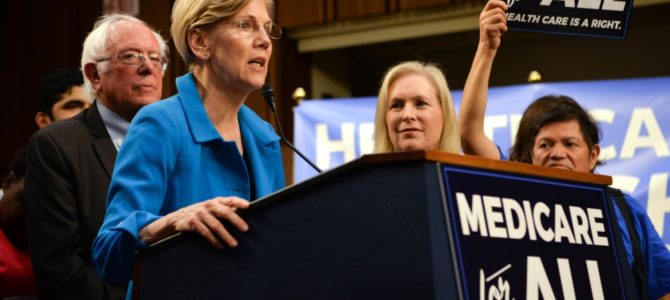The Medicare program’s trustees recently released their annual financial report. The report is similar to last year’s, and like last year, it again serves as a serious wake-up call that the finances for the program are not going well. In general, the growth of health care spending far outpaces inflation and economic growth in the United States.
In 2018, Medicare’s costs consumed 3.7 percent of the country’s gross domestic product (GDP). The trustees project this number to increase to 5.9 percent of the economy by 2038. After 2038, spending is estimated to increase to 6.5 percent of GDP. In addition, the Medicare Federal Hospital Insurance Trust Fund, which pays for Medicare Part A hospital care, will run out of money by 2026.
To successfully address the shortfall, either Medicare payroll taxes would need to increase by 30 percent or spending in the program would need to decrease by 20 percent. In other words, workers would see their taxes increase significantly or hospitals and doctors would experience a dramatic drop in income.
The irony is that despite looming financial failure, leftists are clamoring that a single-payer system—or as they like to call it “Medicare for All”—be imposed on the entire country. The current Medicare program enrolls 15 percent of the U.S. population. For a single-payer plan to have a chance of surviving, the necessary astronomical increase in taxes would choke the economy. In addition, provider payments would sink so low that very few talented people would be attracted to health care. This would lead to a decrease in the quality of care nationwide.
The existing Medicare program is an insurance plan for seniors 65 and older. It is indeed popular with Americans. However, as the trustee report shows, it must absolutely be reformed to remain viable. At some point, our elected officials must face reality and tackle Medicare’s runaway spending. We cannot afford to have them defer the issue to a future Congress.
A simple first step to Medicare reform would be to gradually raise the age of eligibility. When the program started in 1965, the average life expectancy in the United States was 67 years for men and 74 years for women. Average life expectancy is now up to 76 years for men and 81 years for women. This reality has put enormous strain on an entitlement program that was not designed to provide health services to people for so many years late in life.
Another simple Medicare reform would be a more thorough means-testing system. If this were properly implemented, wealthier seniors would pay more, and low-income people would pay less.
There is currently no private insurance market for seniors. Medicare long ago stifled the possibility of any private market. It is virtually impossible to compete with the government, which has monopoly power and an unlimited ability to fix prices and lose money while any potential competitors go out of business.
The private market for the elderly could be resurrected by allowing people to voluntarily opt out of Medicare and allowing those seniors to purchase health savings accounts and high-deductible health plans. Low-income seniors could use vouchers or another type of subsidized premium-support that would allow them to purchase health insurance in the private market.
Physicians should be allowed to seek partial payments from patients or their insurance companies, which by law, they cannot do now unless they leave the Medicare program entirely.
Future generations should be allowed to keep the individual health insurance they want into retirement. This would ensure that as the younger generation saves, their health insurance nest egg would build until they need it in their later years, just as popular IRAs do now.
Reforms can save the current Medicare program. Our elected officials, however, will need political courage to implement these measures. Given the program’s current problems for patients, taxpayers, and providers, imposing “Medicare for All” on Americans is not a reasonable or viable solution.









